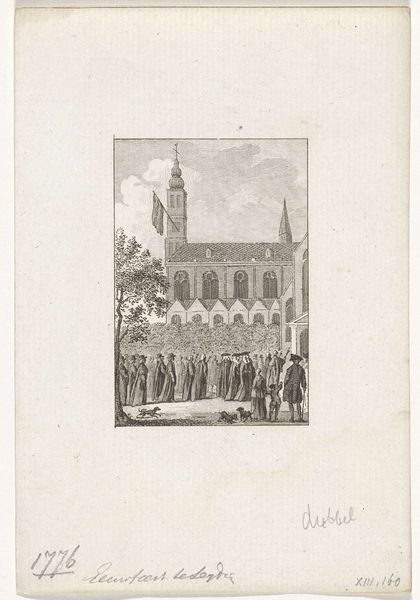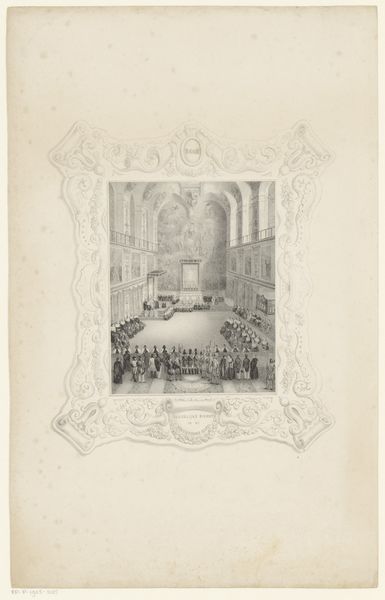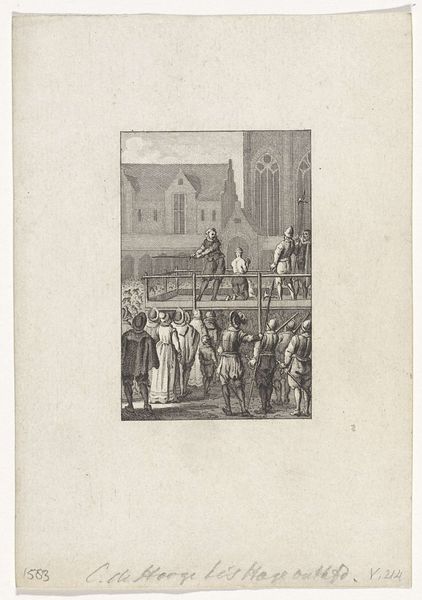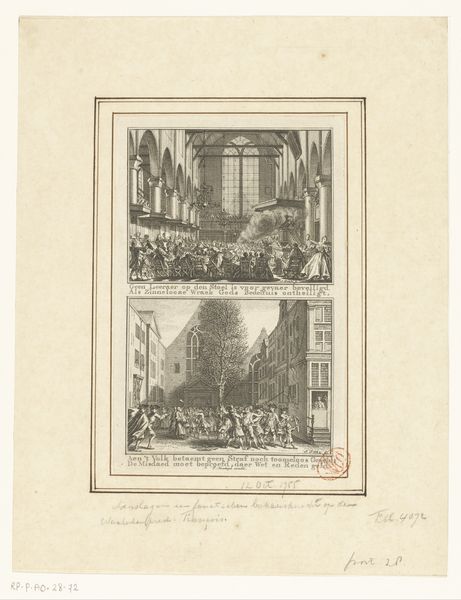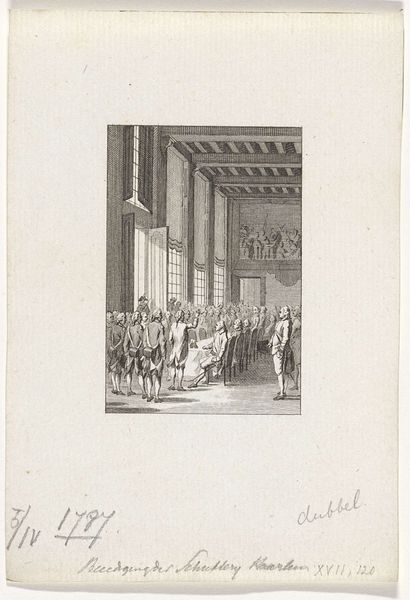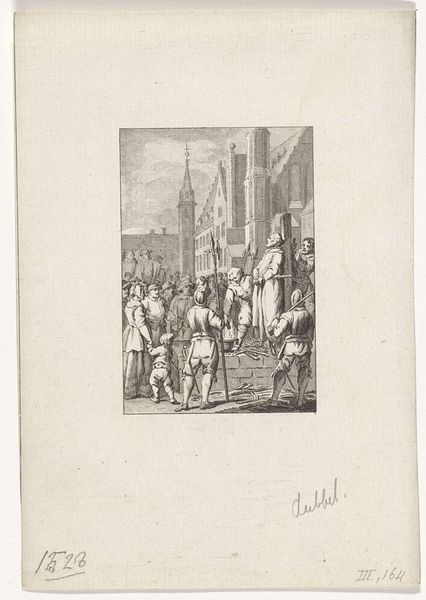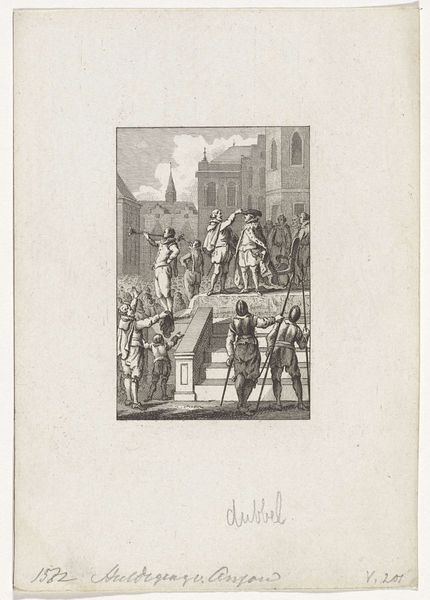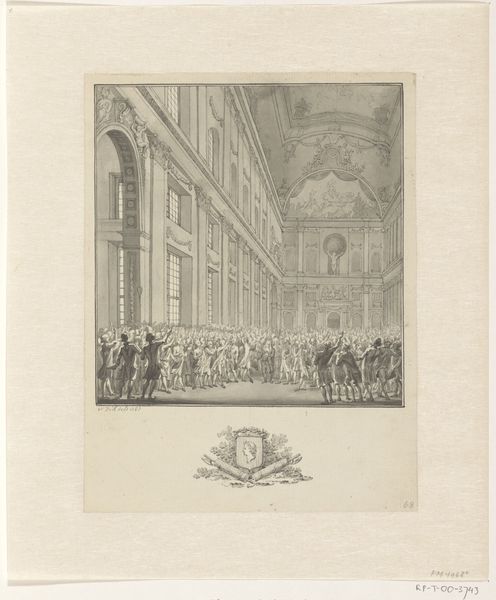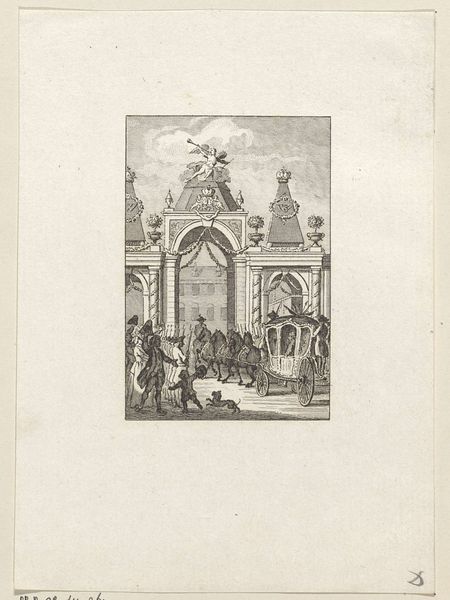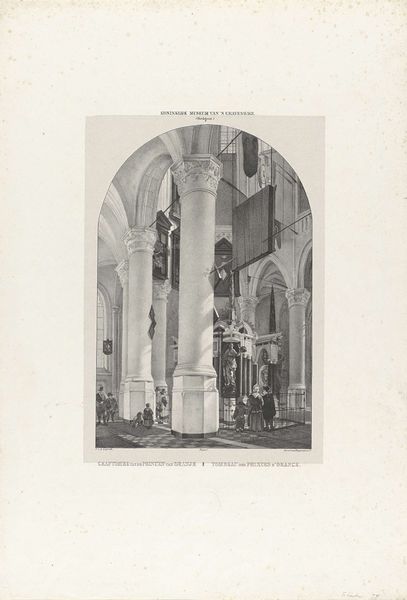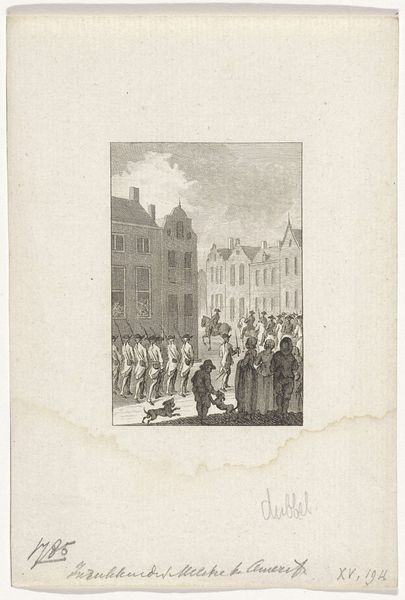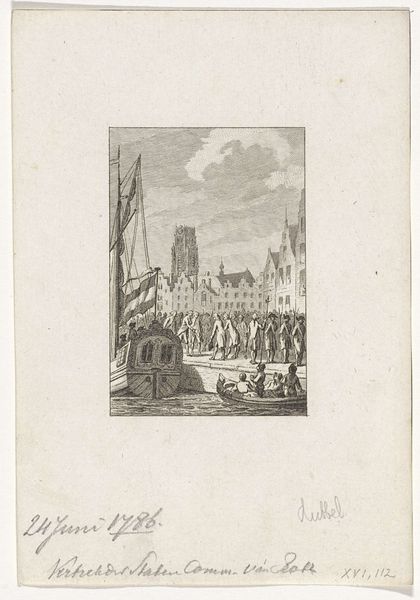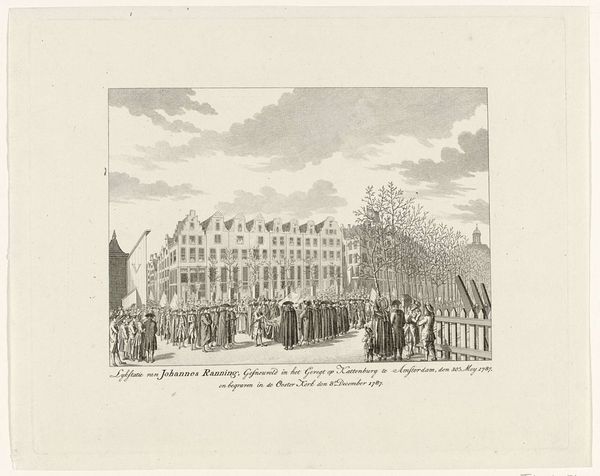
Aanstelling van twee nieuwe burgemeesters te Amsterdam, 1787 1783 - 1795
0:00
0:00
reiniervinkeles
Rijksmuseum
print, engraving
#
dutch-golden-age
#
ink paper printed
# print
#
pencil sketch
#
old engraving style
#
line
#
cityscape
#
history-painting
#
engraving
#
realism
Dimensions: height 160 mm, width 100 mm
Copyright: Rijks Museum: Open Domain
Curator: Looking at this print, titled "Appointment of two new mayors in Amsterdam, 1787", made by Reinier Vinkeles, what stands out to you initially? Editor: The crispness, even with its age. And the precision. You really get a sense of civic order and power, an image deliberately projecting stability, but perhaps obscuring underlying tensions, especially with the assembly of soldiers. Curator: Precisely. It’s an engraving, so we have to consider the material properties – the copper plate, the tools used to incise the lines, the specific ink that allows for these delicate tonal gradations, how those processes impacted labor. Editor: Absolutely. I mean, who was commissioning this print? And for what audience? Consider the late 18th century political landscape in the Netherlands. The Patriot movement was gaining traction, challenging the established order and stadtholder rule. So an image like this becomes part of a larger struggle for power and representation. Curator: And note how the artist used line and shadow to construct architectural spaces. This wasn't just about visual representation; it was a constructed vision, created via calculated mark-making practices to project ideas about place and power that might not have entirely reflected realities of the era. The paper itself carries inherent material value in that economic system. Editor: The architectural backdrop itself acts as a stage, and those figures below represent a performance of power—a carefully crafted display of hierarchy and obedience but who decided who those new leaders are? Whose interests are being served by this carefully constructed scene of political stability and orderly transition of power? It's not neutral, but participates in maintaining existing inequalities and reinforcing the elite's dominance over ordinary citizens. Curator: You make such important points, highlighting the way political messages get transferred by this specific material object. It encourages us to critically analyze the production process itself. The materials are essential in interpreting and constructing our perspective. Editor: Yes, and beyond materials, thinking about this print within a broader history of representation raises crucial questions about exclusion and silence. Whose voices and experiences are not represented? The engraving serves as a stark reminder of how images of power, carefully circulated and consumed, could erase dissenting voices or manipulate narratives of progress. Curator: Looking at how meticulously crafted it is, reminds me of the complex relationships and social structures ingrained in material things that make up history. Editor: And understanding these things and who are absent offers an approach to confront biases of the present. Thank you for pointing all this out, because seeing the materials really gives one insight to everything else at hand.
Comments
No comments
Be the first to comment and join the conversation on the ultimate creative platform.
